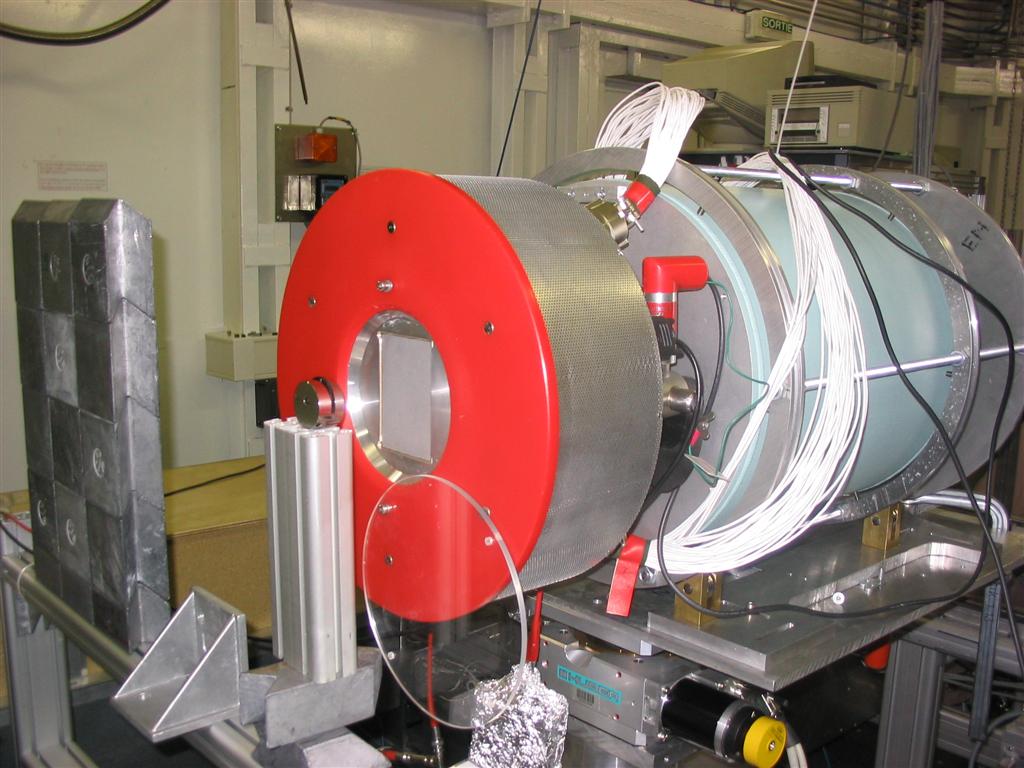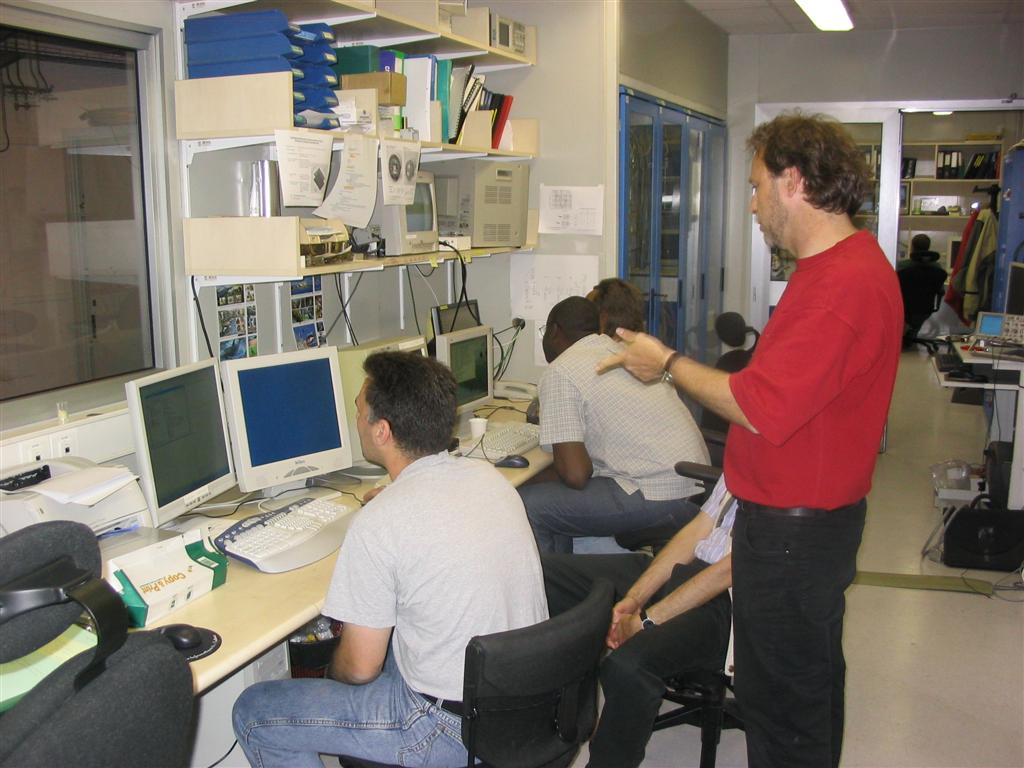Calibration of a polarization-sensitive 2D micro-strip Ge detector
Collisions of heavy ions with electrons or low-density matter are widely affected by electron-ion recombination processes, such as the radiative electron capture (REC) [1], which are of plasma and astrophysical relevance. For high-Z ions and fast collisions, electron-ion recombination produces usually strongly polarized x-rays in the energy domain between 50 and 500 keV [2,3]. The polarization sensitivity of segmented Ge detectors via the Compton effect provides a key tool to investigate the physics of these processes [4].
For REC processes occurring in collision of bare uranium ions with low-Z gaseous targets a very first study using a 4 x 4 planar Ge(i) pixel detector with a pixel size of 7 x 7 mm2 has been performed recently at the storage ring ESR, at GSI, Darmstadt. As a preliminary result, a linear polarization for the process of REC into the K-shell of more than 20% was deduced, the polarization plane coinciding with the scattering plane. For future experiments on the polarization of hard x-rays, a micro-strip Ge detector has been developed and is currently being tested at GSI. This 2D position sensitive Ge(i) detector has a thickness of 1.2 cm and consists of 48 vertical strips of 1.17 mm and 128 horizontal strips of 0.25 mm. This detector seems to be most appropriate for polarization measurements in photon energy range of relevance for K REC processes of heavy elements (100 – 300 keV). However, calibration measurements are of great importance to achieve a high level of accuracy. In this respect, the polarized high-energy synchrotron radiation available at ESRF represents an ideal and unique tool for such calibration measurements.
Very recently first calibration measurement with the 2D position sensitive detector has been performed at ESRF using synchrotron radiation.
References:
[1] J. Eichler, W. Meyerhof, Relativistic Atomic Collisions, Academic Press, San Diego, Ca, 1995.
[2] A. Surzhykov, S. Fritzsche, Th. Stöhlker, Phys. Lett. A 289 (2001) 213.
[3] J. Eichler, A. Ichihara, Phys. Rev. A 65 (2002) 062716.
[4] S. E. Inderhess et al., IEEE Trans. Nucl. Sci. 43 (1996) 1467.
The 2D µ-strip prototype detector was developed by D. Protic, T. Krings et al. of IKP FZ Jülich
For details see
D. Protić, Th. Stöhlker, T. Krings, I. Mohos, U. Spillmann - 2D-mustrip - accepted for publications in IEEE.
Andrey Surzhykov, Stephan Fritzsche Thomas Stöhlker, Stanislav Tashenov,
Physical Review Letter 94, 203202 (2005)
A. Surzhykov, S. Fritzsche, W.-D. Sepp, Th. Stöhlker, A. Orsic Muthig
NIMB 276, 276 (2005) doi:10.1016/j.nimb.2005.03.189
A. E. Klasnikov, V. M. Shabaev, A. N. Artemyev, A. V. Kovtun, Th. Stöhlker, and V.A. Yerokhin
NIMB 235, 284 (2005) doi:10.1016/j.nimb.2005.03.191
A. Surzhykov, Stephan Fritzsche, Th. Stöhlker and S. Tachenov
Physical Review A 68, 22710 (2003).
Th. Stöhlker et al., Nuclear Instruments and Methods in Physics Research
B 205, (2003) 210–214 (NIMB
link)
Talks
and posters:
Poster -
Applications of Position Sensitive Germanium Detectors for X-Ray Spectroscopy
of Highly-Charged Heavy Ions. (PDF
version)
For preliminary results see main page.
Links:
Detector development - (Research part of this page)
Photos:


